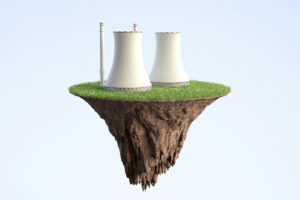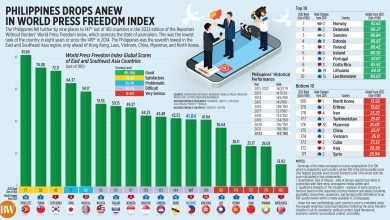Nuclear is the future: Trouble is, nobody wants a reactor in their backyard

As energy security becomes a growing source of angst, it’s clear that large-scale, reliable use of renewable resources remains a distant reality in many countries. That’s allowed a more controversial — and almost perfect — alternative to make a comeback: nuclear. Trouble is, nobody wants a reactor in their backyard and the memories of past accidents remains a serious concern.
But with costs rising and few solutions at hand, both governments and companies are turning to nuclear power as a cleaner and cheaper source to help them reach their ambitious climate goals.
Even if a few years away, the development of, and investment in, nuclear energy sources and storage methods could ensure industrial operations highly dependent on pre-heating processes for raw materials and high temperatures are able to function as the world navigates its way through this energy crisis. With all the supply chain snarls over the past year, a power shortage is the last thing consumers and businesses need.
In Japan, the median levelized cost of energy* is far lower than utility scale solar and offshore wind. A recent survey showed that more than 80% of Japanese companies are in favor of restarting nuclear reactors to meet power needs. Electric utility Kansai Electric Power Co. is resuming work at one its idled reactors earlier than planned to manage energy demand. Bringing the Mihama No. 3 reactor online will lower the need for liquefied natural gas, and the firm’s nuclear generation could grow 76% by 2023 as it brings back more reactors, according to Bloomberg Intelligence.
In India and China, it’s proving competitive, too, where dirtier options like coal are now more expensive. South Korea is focused on reviving nuclear power, which contributes to about 27% of the nation’s energy mix.
Earlier this year, the Biden administration issued a notice of intent for the implementation of a $6-billion nuclear credit program that supports the operation of reactors — “the nation’s largest source of clean power” — across the country. Last week, the US Department of Energy awarded over $60 million for 74 nuclear projects. British jet engine maker Rolls-Royce Motor Cars Ltd., backed by the UK government and other investors, said late last year it was going to begin building smaller and cheaper reactors. Some of its compact modular reactors are expected to come online by 2029 and the regulatory processes are already underway.
The return to nuclear makes sense: The cost of extending the lifetime of power plants and building reactors in countries that have stuck by the energy form is cheaper and competitive. Those that haven’t are now struggling with their aging fleet of reactors and lack of other sources.
The biggest stumbling block, though, is the deep-seated anxieties around safety and waste disposal. Memories of nuclear accidents like Three Mile Island in 1979, Chernobyl in 1986, and Fukushima Daiichi in 2011 continue to loom large in both public and corporate memory. Yet what’s often forgotten is that on a deaths-per-unit of electricity basis, nuclear remains at the bottom of the list, while coal is at the top.
The progress that’s been made on alleviating issues around nuclear power is underappreciated. For instance, safety in reactors is typically based on an assessment of the core melting. To address these concerns, 14 countries have come up with lower-risk designs and development of a new generation of reactors. These systems will use different coolants, like molten salts or liquid metal, and methods that ultimately make nuclear power production cleaner, secure, and more efficient. Reactors that use such materials seek to reduce or cut the production of dangerous gases that explode under pressure.
A host of startups are working on making nuclear power more acceptable. NuScale Power LLC is building small modular reactors that could eventually power 60,000 homes per unit. The firm, which has received more than $450 million of support from Washington, is working with the US and Romanian governments to build a plant in the eastern European country. Meanwhile, Sweden’s Seaborg Technologies has teamed up with Samsung Heavy Industries Co. to build a floating, compact molten salt reactor that could change energy use in logistics. Bill Gates-backed TerraPower — also focused on small reactors — has partnered with South Korea’s industrial conglomerate SK Group to build these plants.
Nuclear power stands to be the solution, or at least fill major energy gaps, in the coming years. In addition to the existing nuclear fission used in commercial reactors, startups are now pushing towards nuclear fusion technologies and have raised billions of dollars from the likes of Tiger Global LP and Bill Gates. Rejecting the power source out of fear isn’t going to get us too far, and nor will scare-mongering. Companies and countries shouldn’t be shying away from openly discussing nuclear energy and raising awareness. Public acceptance is key. Without it, we’ll be breathing dirty air and living through outages.
*Present cost of energy generation of a generator over its lifetime.
BLOOMBERG OPINION




